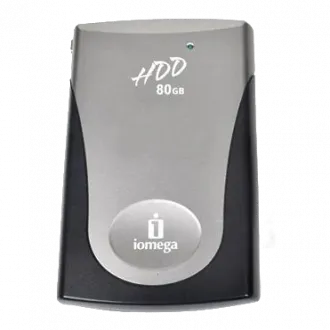Troubleshooting external iOmega hard drives on Windows 11 and 10 can be done by following these steps:
- Check the physical connections: Ensure that the USB cable connecting the external hard drive to your computer is securely plugged in on both ends. If possible, try using a different USB port to rule out any port-related issues.
- Power cycle the hard drive: Disconnect the power source from the iOmega hard drive (if it has a separate power adapter) and also unplug the USB cable. Wait for a few seconds, then reconnect the power and USB cables. This can help reset the device.
- Device Manager check: Open Device Manager by right-clicking on the Start button and selecting "Device Manager" from the menu. Look for any yellow exclamation marks or question marks next to the iOmega hard drive entry. If you find any, right-click on the device and select "Update Driver" to search for the latest driver software.
- Drive recognition: If the external hard drive is not recognized at all, you can try connecting it to a different computer to determine if the issue lies with the drive or your computer. If it is recognized on another computer, the problem may be related to your Windows installation or USB drivers.
- Disk Management: Open Disk Management by right-clicking on the Start button and selecting "Disk Management." Check if the iOmega hard drive appears in the list. If it does, but is not assigned a drive letter, right-click on the drive and select "Change Drive Letter and Paths." Assign an available drive letter to the external hard drive.
- Test with a different cable or enclosure: If you have access to another compatible USB cable or an external hard drive enclosure, try connecting the iOmega hard drive using those to rule out any cable or enclosure issues.
- Power Adapter: Most older 3.5in drive models use a power adapter to actually power the device up (some 2.5in drives may use USB power from the cable) make sure you are using the original adapter. Over time many of these adapters with fail, if a replacement is needed make sure the voltage and wattage is the same and that the polarity of of the connector is correct in the case of after market/generic adapters
- Data recovery software: If none of the above steps work and you have valuable data on the iOmega hard drive, consider using data recovery software to retrieve your files. There are various reputable data recovery tools available online that can help recover data from faulty drives.
- USB Drivers: Older versions of Windows (Windows 7 and below) may need USB drivers for the USB port itself, if you are currently using the port for other devices and they work then they are OK. Make sure these are installed. (Drivers will depend on the USB Card/Chipset that is in your system)
If the above steps do not resolve the issue, consult a professional for further assistance.
